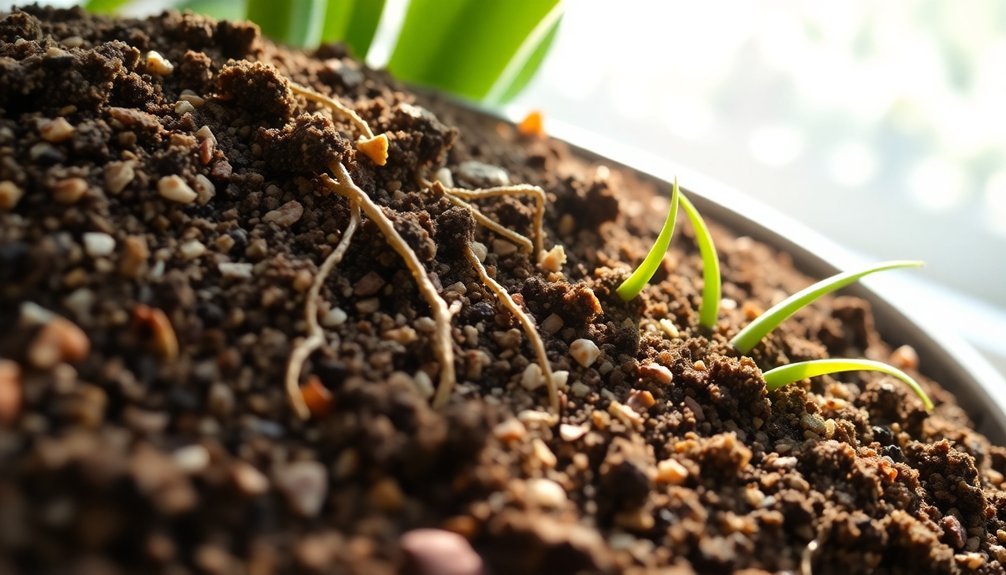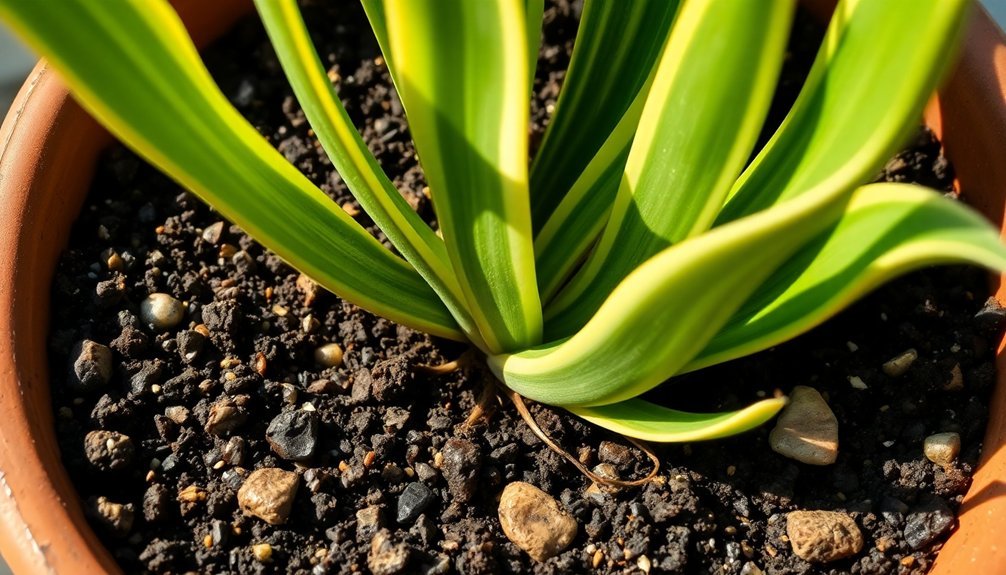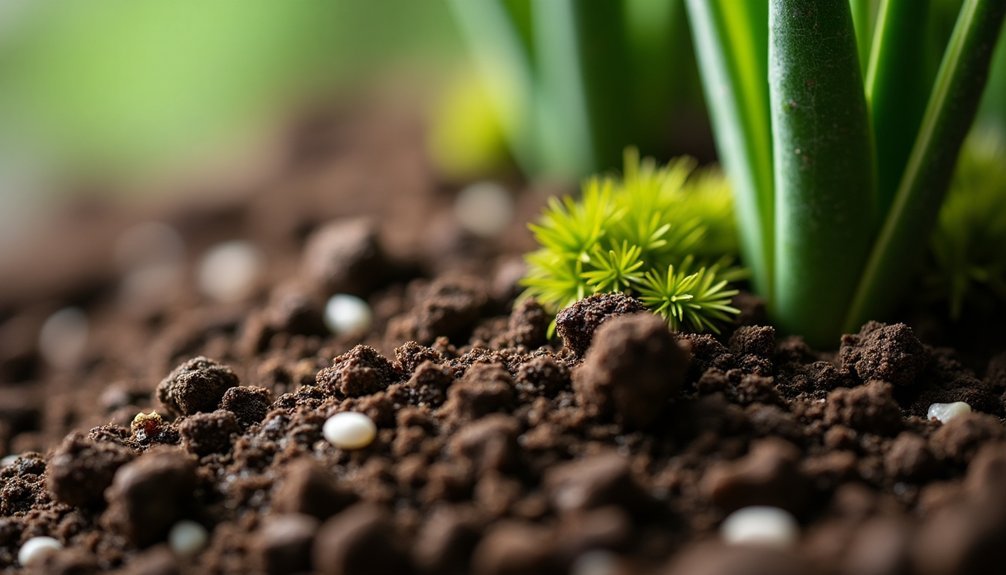Create the perfect snake plant soil mix by combining 2 parts organic potting soil with 1 part perlite and 1 part coarse sand. You'll want to maintain a slightly acidic to neutral pH between 5.5-7.5 for best nutrient absorption. Don't forget to add slow-release fertilizers like worm castings for sustained nutrition. These three proven components will give your snake plant the ideal growing environment, but there's even more to maximizing your plant's potential.
Best Soil Components for Maximum Root Health

When it comes to promoting maximum root health for your snake plant, selecting the right soil components is fundamental.
Start with organic potting soil as your base, which provides essential nutrients and creates an ideal foundation for growth. Mix in perlite to improve drainage and aeration, preventing the dreaded root rot that can occur in poorly draining soils.
Don't forget to add coarse sand to your well-draining soil mix. This important component increases porosity and replicates the arid conditions that snake plants naturally thrive in.
Maintain a slightly acidic to neutral pH (5.5-7.5) to optimize nutrient absorption. Remember to refresh your soil mix every 2-3 years – this simple practice prevents soil compaction and guarantees your snake plant's roots stay healthy and vigorous.
Essential Drainage Materials and Ratios
Although snake plants can tolerate various soil conditions, proper drainage materials and ratios remain essential for their long-term success. For the best snake plant soil, combine 2 parts organic potting soil with 1 part perlite and 1 part coarse sand. This well-draining soil mix prevents root rot while supporting healthy growth.
If you're growing your plant in tropical areas, add 20-30% coconut coir to improve moisture retention. Alternatively, start with a succulent mix and blend in 10-20% vermiculite for balanced moisture control.
Remember to incorporate 25-50% perlite to enhance aeration and guarantee excess water flows freely through drainage holes. Monitor your soil regularly to prevent compaction, which can compromise drainage.
These precise ratios create an ideal growing environment that mimics your snake plant's natural habitat.
Nutrient-Rich Amendments for Optimal Growth

To maximize your snake plant's growth potential, enriching the soil with nutrient-rich amendments can make a significant difference. Creating favorable conditions for healthy growth starts with incorporating organic compost and guaranteeing proper drainage remains uncompromised.
- Mix organic compost with well-draining materials like perlite to boost nutrient availability while maintaining essential aeration for your plant's roots.
- Monitor soil pH between 5.5 and 7.5, adjusting as needed to confirm your snake plant efficiently absorbs available nutrients.
- Add slow-release fertilizer options like worm castings alongside moisture-retaining coconut coir to provide sustained nutrition without waterlogging the soil.
These nutrient-rich additions work together to create an ideal growing environment, supporting your snake plant's development while maintaining the vital balance between fertility and drainage that these plants need to thrive.
Frequently Asked Questions
What Is the Best Soil Mixture for Snake Plants?
You'll want to mix 2 parts organic potting soil with 1 part perlite and 1 part coarse sand. Add some succulent mix or coconut coir for better drainage and moisture balance.
How to Best Repot a Snake Plant?
You'll need a well-draining pot with succulent mix. Gently remove your plant, loosen roots, and place it at the same depth in the new container. Don't water for a week after repotting.
What Is the Best Miracle Grow Soil for Snake Plants?
You'll find Miracle-Gro Succulent Potting Mix is your best choice for snake plants. It's specially formulated with excellent drainage, proper pH levels, and organic materials that'll keep your plant's roots healthy and thriving.
What Do Snake Plants Like to Be Potted In?
You'll want to pot your snake plant in well-draining cactus or succulent mix. Add perlite, coarse sand, and vermiculite to regular potting soil for better drainage, or use pre-made succulent soil.
In Summary
You'll set your snake plant up for success by combining well-draining materials with nutrient-rich amendments in the right proportions. Remember to mix 2 parts potting soil with 1 part perlite and 1 part coarse sand for ideal drainage. Don't forget to add a small amount of compost or worm castings to boost nutrients. With this perfect soil mix, your snake plant will thrive for years to come.





Leave a Reply